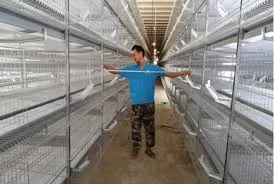small pellet feed making machine
Nov . 21, 2024 00:01 Back to list
small pellet feed making machine
The Small Pellet Feed Making Machine Revolutionizing Animal Feed Production
In recent years, the demand for high-quality animal feed has surged due to the expansion of livestock farming and aquaculture. This has led to the innovation of various feed production technologies, among which the small pellet feed making machine stands out. These machines are designed to produce nutritious, dense pellets that enhance feed efficiency and animal health.
What is a Small Pellet Feed Making Machine?
A small pellet feed making machine is a compact device specifically designed for producing animal feed pellets from a variety of raw materials such as grains, legumes, and additives. The process involves grinding the raw materials, mixing, and then extruding through a die to form small pellets. The size of the produced pellets can be adjusted according to the requirements of different animal species.
Benefits of Using Pellet Feed
Pellet feed offers several advantages over traditional loose feed. First and foremost, the pelleting process improves the digestibility of feed. The heat and pressure involved in pelletizing can break down complex nutrients, making them more accessible for animals. Furthermore, pellets reduce feed wastage, as animals are less likely to sort through their food and leave behind undesirable particles. This leads to more efficient feed conversion rates and overall better growth performance in livestock.
Additionally, pellet feed helps in improving the overall hygiene of animal feeding practices. The pelleting process can eliminate harmful bacteria and pathogens, making the feed safer for consumption. This aspect is particularly important for poultry and aquaculture, where disease outbreaks can have devastating effects on production.
Key Features of Small Pellet Feed Making Machines
small pellet feed making machine

Small pellet feed making machines come with various features that enhance their functionality and efficiency. Many of these machines are equipped with adjustable die sizes, allowing users to produce pellets of different diameters to suit various species like chickens, pigs, or fish.
These machines are often designed with user-friendly controls, making them accessible for small-scale farmers or entrepreneurs who are new to feed production. Moreover, some models are portable, enabling farmers to produce feed on-site, reducing transportation costs and time.
Energy efficiency is another critical aspect. Many small pellet feed making machines are designed to consume less electricity while maintaining high production capacity. This is especially beneficial for small businesses or farms that operate on a tight budget.
The Economic Impact of Small Pellet Feed Machines
The introduction of small pellet feed making machines has had a significant economic impact, particularly in rural communities. They enable small-scale farmers to produce high-quality feed at a lower cost, promoting self-sufficiency and reducing reliance on commercial feed suppliers. By producing their own feed, farmers can tailor the nutritional content to the specific needs of their animals, potentially leading to greater productivity and profitability.
Moreover, the availability of affordable pellet machines fosters entrepreneurship. Farmers can start small feed production businesses, providing feed to fellow farmers in the area. This creates job opportunities and stimulates local economies.
Conclusion
In summary, small pellet feed making machines are transforming the way animal feed is produced, offering numerous advantages in terms of nutrition, cost efficiency, and convenience. As the global demand for animal products continues to grow, these machines will play a crucial role in meeting that demand while ensuring sustainable farming practices. For anyone involved in the agricultural sector, investing in a small pellet feed making machine could be a game-changer that enhances productivity and boosts profitability.
-
Hot Sale 24 & 18 Door Rabbit Cages - Premium Breeding Solutions
NewsJul.25,2025
-
Automatic Feeding Line System Pan Feeder Nipple Drinker - Anping County Yize Metal Products Co., Ltd.
NewsJul.21,2025
-
Automatic Feeding Line System Pan Feeder Nipple Drinker - Anping County Yize Metal Products Co., Ltd.
NewsJul.21,2025
-
Automatic Feeding Line System - Anping Yize | Precision & Nipple
NewsJul.21,2025
-
Automatic Feeding Line System - Anping Yize | Precision & Nipple
NewsJul.21,2025
-
Automatic Feeding Line System-Anping County Yize Metal Products Co., Ltd.|Efficient Feed Distribution&Customized Animal Farming Solutions
NewsJul.21,2025






